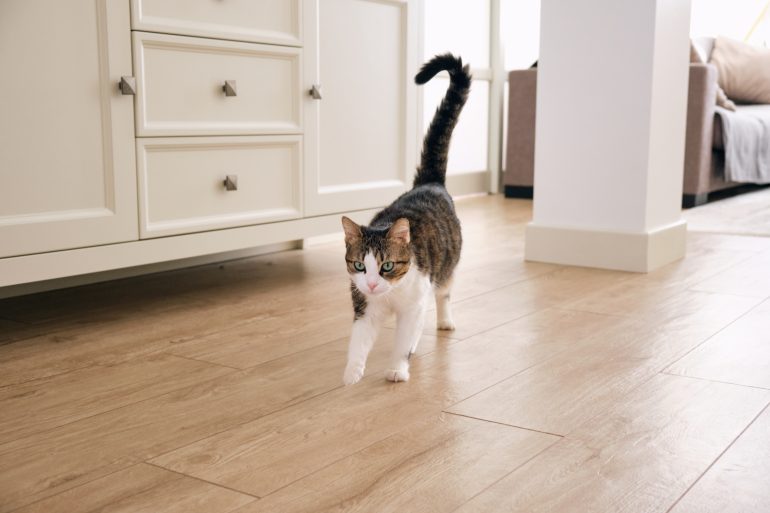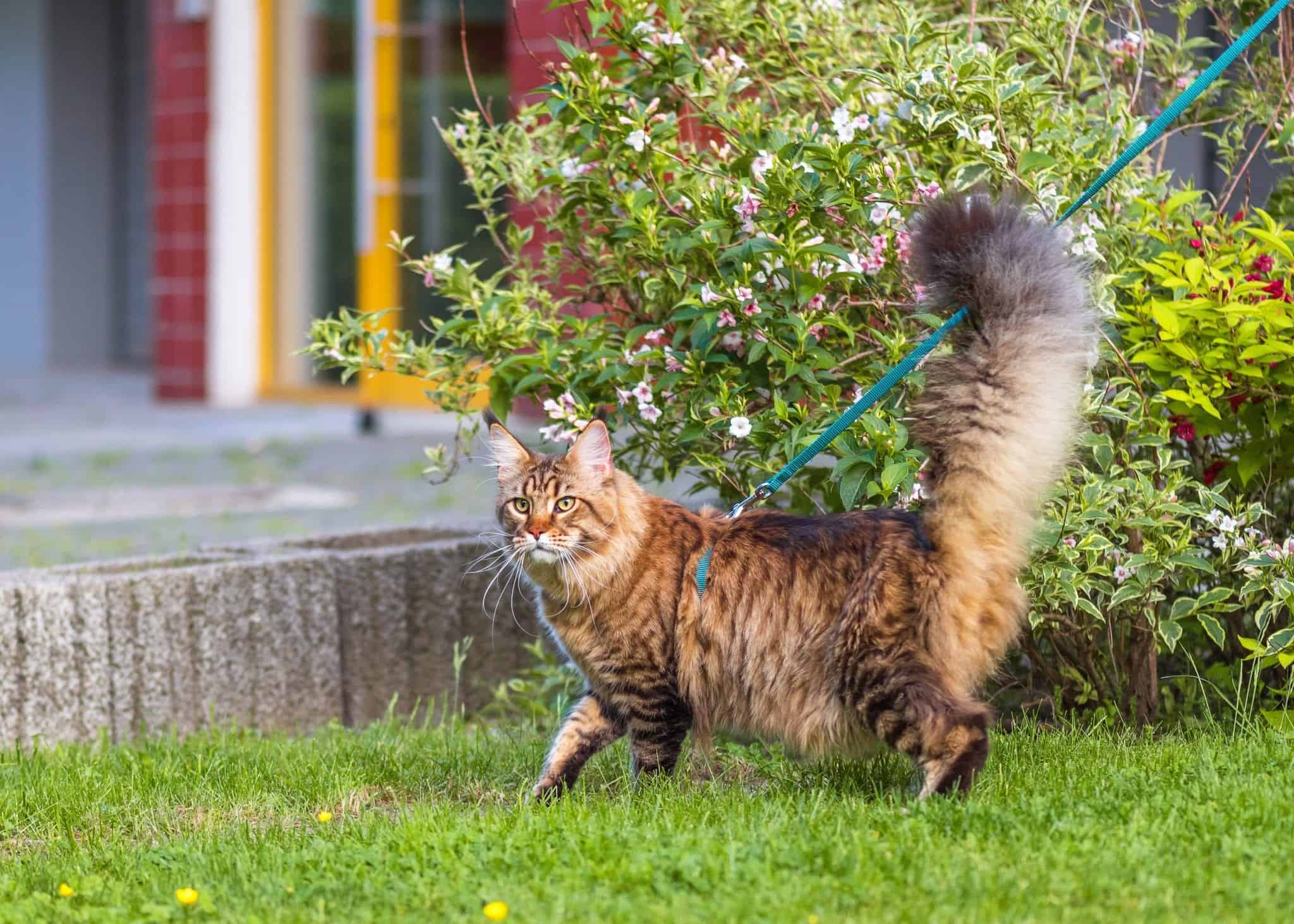Cats are notoriously complicated. One second they want cuddles, and the next they’re biting your fingers. It can be hard to discern what’s going on in their furry little heads, but you might be surprised to hear that cats are actually skilled communicators. They express themselves in countless different ways every day. No, they don’t actually speak to you, but felines find other ways to express themselves and send messages. One of those ways is with their tails. A cat’s tail is designed to help our agile friends keep their balance, but it’s also a big part of feline body language.
Whether it’s swishing, flicking, curved, or puffed up, your cat’s tail is trying to tell you something. Here’s a basic breakdown for deciphering that language.
High and Upright
A cat that’s holding their tail in a high, upright position is confident and happy. She’s relaxed in her home and feeling good. When you see this tail position, it’s a good opportunity to lean down for some love. Your cat is in a great mood and is most likely willing to show people just how friendly she can be. If that high tail gives a slight twitch at the end, that could mean your cat is especially happy, and you’re doing something right.
Straight Down
Now that you know a high tail equals happiness, it’s easy to remember that a low tail position means you better watch out. Something is bothering your cat, and they’re not in the mood for games. A low tail can signal either aggression or a general bad mood. But before you assume the worst, consider your cat’s breed and normal tail position. Some cat breeds, like Persians, tend to keep their tails low for no particular reason.
Level With Spine
When your cat is feeling unsure or uneasy, they’ll often position their tail straight back and level with their spine. This doesn’t mean that they’re in a bad mood, necessarily, it just means there’s something on their mind. Their tail could be in this position for the first few minutes when a visitor comes into the house. And when they realize the new person is not a murderous villain, their tail will rise up into a happy pose.
Stiff and Puffy
Cats puff up their tails when they feel scared or threatened. The extra fluff to their tail makes them bigger and more intimidating in hopes of warding off whatever it is they’re afraid of. Sometimes it’s another cat they don’t get along with, and oftentimes, puffy tails come out when there’s a dog around. Your cat might also puff their tail when you threaten them with bath time or a loathsome ear cleaning.
Curled Into a Question Mark
A curly question mark tail is a sure sign your friendly feline is ready to play. Cats often curl the tips of their tails when they’re feeling energized. It’s a great time for you to take a break from whatever you’re doing and bring out the feather wand. Cats need regular exercise to stay healthy, and playing with their humans helps them bond.
Swishing Back and Forth
When dogs wag their tails, they’re most likely happy and excited. But when your cat’s tail starts swishing back and forth, it sends a very different kind of message. Rapidly moving their tail back and forth is a sign that your cat is either afraid or agitated. They’re telling you to back off, and if you don’t comply, they might bring out the claws. In your cat’s mind, they gave you fair warning. So it’s not their fault if you misread their signals.
Slowly Swaying or Twitching
When compared to a swish, a sway or a twitch is slower and more concentrated. Cats often twitch their tails during playtime when they’re stalking a catnip mouse or feather. Your cat’s tail might also start swaying if they’re intently watching a bird outside the window. This tail movement suggests your cat is focused on something interesting.
The trouble with tail communication is that it isn’t an exact science. If you want to seriously improve your communication with your cat, pay attention to what’s “normal” for them. Every cat is an individual, and with time and observation, you’ll learn exactly what your cat is trying to tell you. Understanding your cat’s tail will improve your relationship and overall bond.








